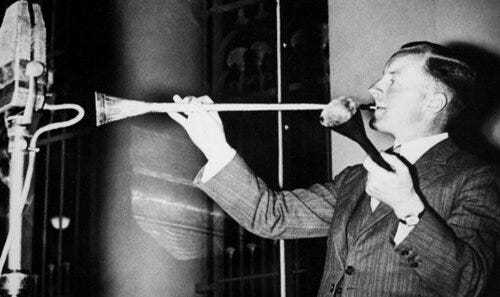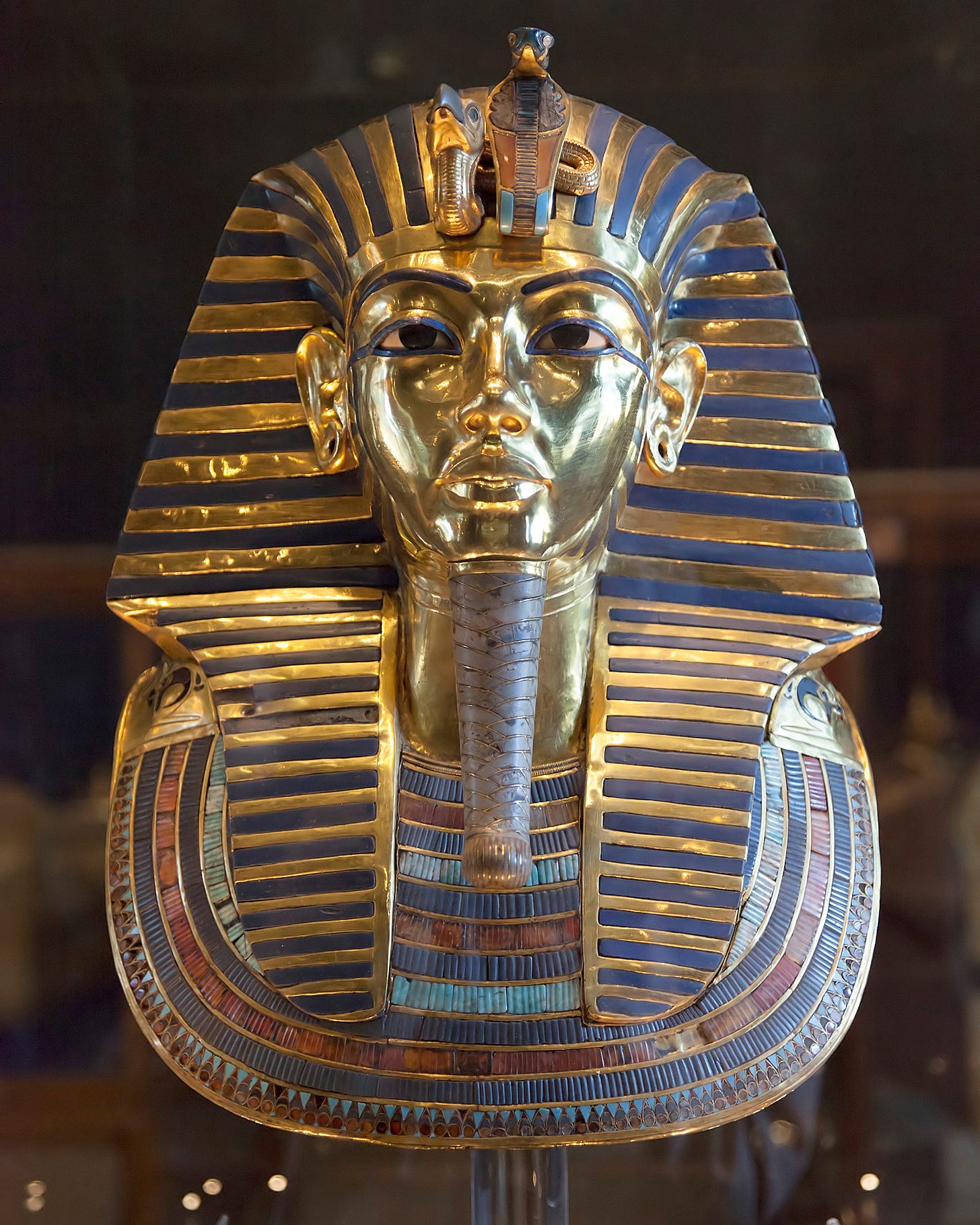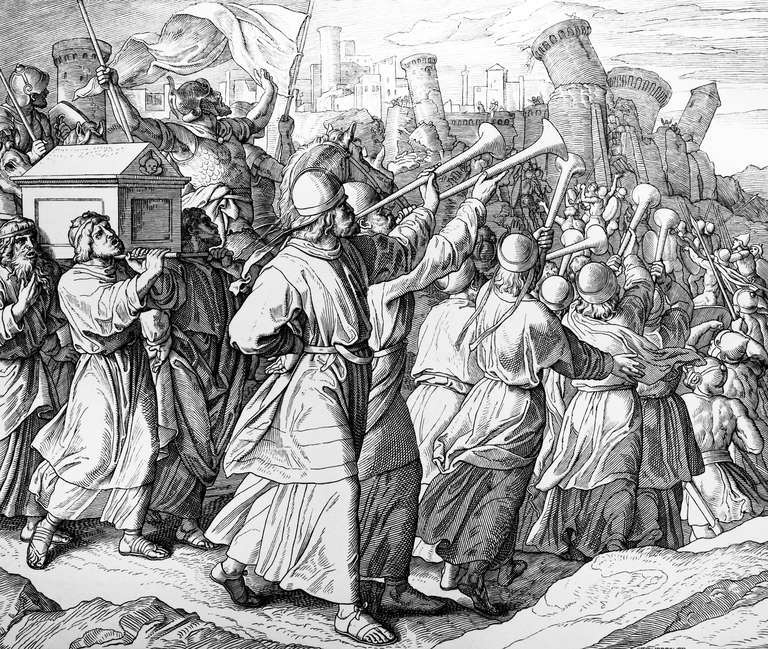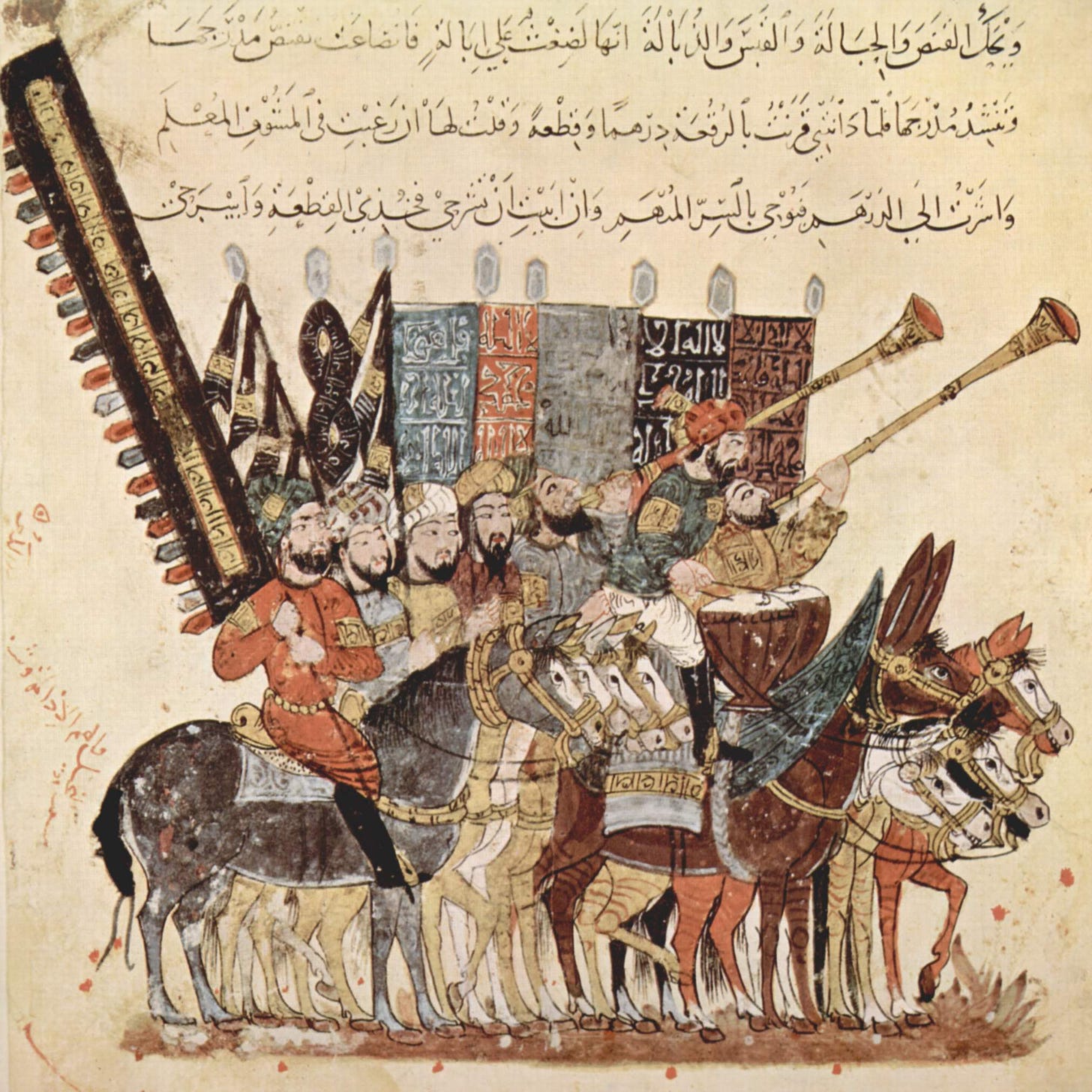Why Was King Tut Buried with a Trumpet?
Why Was King Tut Buried with a Trumpet?
"Whenever someone blows into it, a war occurs"
Why was King Tut buried with a trumpet? Was he planning to party in the next life?
In fact, Tut had two trumpets in his tomb. One was made of silver and the other of bronze or copper. (It hasn’t been submitted to a metallurgical analysis to determine which.)
The silver trumpet was clearly more important to Tut—and not just because he had his name included in the delicate design. It was found in the burial chamber itself—while the bronze or copper horn only made it as far as the antechamber. Both trumpets are quite long, but the silver trumpet is the longest—58.2 centimeters compared to 49.4 centimeters for its partner.

The trumpets from Tut’s tomb are not only the earliest surviving trumpets from Egypt, but are actually the oldest operational trumpets anywhere in the world. And we know they’re operational, because somebody actually played them.
This extraordinary—and probably foolish—incident happened on a BBC broadcast from April 16, 1939. A British army trumpeter named James Tappern stood before a studio microphone, inserted a modern mouthpiece into the 3,500-year-old horns, and made music. Some 150 million people listened to the broadcast as he played fanfares consisting of just three notes.
Here is the sound of King Tut’s trumpets—perhaps never to be heard again.
But even this performance is misleading.
Without the use of a modern mouthpiece, these ancient trumpets are only capable of playing “one good note”—in the words of Percival Robson Kirby, who had attempted an earlier performance while visiting Cairo in 1933. Kirby was upset at the later BBC broadcast, which presented a misleading rendition of ancient Egyptian trumpet music.
This music wasn’t supposed to be pretty. Plutarch tells us that some towns in ancient Egypt stopped using trumpets because they sounded like the braying of an ass. But, as I explain below, that hardly mattered—this horn served a far higher purpose than playing “Giant Steps” or “The Lick.”
Kirby found a wooden insert in the Tut tomb trumpet, which others have guessed was a kind of mute—perhaps used in the manner of Miles Davis or Bubber Miley—to distort the “one good note.” Kirby, however, surmised that the insert was merely used to protect the trumpet, and especially prevent denting. By his reckoning, King Tut was happy with just one tone.

Ancient Egyptians believed that these trumpets possessed magical properties. And even some modern Egyptians agree. When the bronze/copper trumpet was stolen during the Egyptian riots of 2011, museum curator Hala Hassan warned that “whenever someone blows into it a war occurs.” Just a week before the Arab Spring rioting, a member of the museum staff had allegedly done just that during a photographing session—and soon there was violence in the streets. According to popular lore, the same thing had happened before the 1967 Six-Day War and the 1991 Gulf War.
And, of course, the famous BBC broadcast of 1939 took place just five months before the outbreak of World War II. Another performance was attempted in 1941, although this time a replica of the silver trumpet was used, because the original had been damaged in the earlier attempt. If you believe the superstition, that 1941 tooting on Tut’s horn led to Pearl Harbor and the entry of the US into World War II in December of that year.
The person who stole the trumpet in 2011 may have feared consequences—whether magical or otherwise. In any event, the trumpet was returned under mysterious circumstances a few weeks after it disappeared.
These are colorful stories, but they don’t help us understand why an Egyptian pharaoh required a trumpet in his tomb. To answer this question we need to understand what trumpets did in ancient times.

Even back then, trumpets were used in military settings. It’s a loud instrument, and thus useful in signaling. But it’s also a frightening sound—and not just for humans. A surviving image from the Old Kingdom appears to show a boy in a boat holding a trumpet, apparently trying to rouse water fowl so hunters can kill them. But the use of trumpets in warfare is even better documented. Images from the time of Ramesses II and III, for example, show trumpeters in actual battle scenes.
Similar practices can be found elsewhere. The nafir trumpet from Morocco looks much like the ancient Egyptian trumpet. Below is an image of the nafir from medieval times. I note that depictions from ancient Egypt also often show trumpeters in pairs—they were clearly deployed in groups of two during military engagements, although the reason is still not entirely clear.
But the Egyptian gods also liked trumpet music. We know that military trumpets showed up in religious processions. But the most revealing clue comes from a surviving image from a later period, which shows a woman—almost certainly Isis—playing a trumpet for the god Osiris, who appears to be shedding tears.
Osiris is god of the dead. Hence Egyptologists have surmised that trumpet music was associated with resurrection and the afterlife. As many of you know, my latest book is called Music to Raise the Dead—which I’m publishing in installments here on Substack—so consider this ancient horn as just one more example.
Of course, this shouldn’t surprise anyone, because this same belief is often expressed in our own times. The linkage between trumpets and resurrection is stated specifically in the Bible, and many Christians anticipate that (as promised in 1 Corinthians 15:52:
The trumpet shall sound, and the dead shall be raised incorruptible, and we shall be changed.
And there are many magical trumpets in other ancient belief systems—perhaps most famously the shofar used in rituals, and which brought down the walls of Jericho, as described in the Book of Joshua.

These bits and pieces of evidence help us understand why Tut had trumpets in his tomb. My hypothesis is that the silver trumpet in his burial chamber was supposed to help in his resurrection in the afterlife. The smaller bronze or copper trumpet in the antechamber had a more military use, designed for protection or signaling or merely pomp and ceremony.
The details may elude us, but there’s one mistake we should avoid. Tut’s trumpets weren’t for mere entertainment. The fact that they only made “one good note” is revealing in that context. One note doesn’t do much at the party or disco, but it might be just enough to raise the dead. Even for a mighty pharaoh, that’s a powerful kind of music.

Comments
Post a Comment